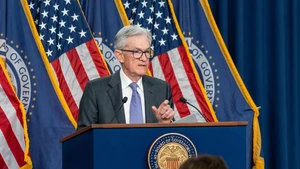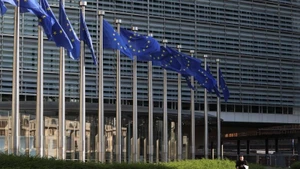After months of stagnant growth, the latest survey data shows that China's manufacturing activity increased again in August. The August 2023 PMI index of the manufacturing sector compiled and published by Caixin, on September 1, exceeded expectations and reached 51. This data shows that conditions are improving.
Experts from research company Capital Economics assessed, that amid more and more gloomy information casting a shadow on China’s growth prospects, the August PMI data is a bright spot for the market, and shows that demand for goods is booming. The August PMI index shows that the Chinese Government's economic stimulus measures are starting to take effect.
Recently, Beijing has announced a series of measures to support the economy, such as cutting deposit interest rates at some of the country’s largest state-owned banks and loosening lending regulations for home buyers.
More optimistic signals have also appeared in the world's number one economy and developments in the labour market are creating conditions for the FED to stop raising interest rates, or even lower interest rates next year. Data released on September 1, showed that the number of jobs in the non-agricultural sector in the US increased higher than expected, reaching 187,000 jobs in August.
However, US job growth is slowing down, showing that the confidence that the FED will stop raising interest rates is growing stronger. The number of US jobs in July 2023 returned to pre-COVID-19 pandemic levels, opening up a sign that the country's job market is cooling down, while also giving hope to workers. The FED can lower inflation without causing unemployment to rise sharply.
Fiona Greig, a researcher and investment policy consultant at Vanguard Company, said labour turnover data from July has adjusted back to pre-pandemic levels. Besides, spending tends to weaken, reducing inflation concerns in the US.
However, with the economic signals mentioned above, analysts say that it is likely that the FED will keep interest rates stable at 5.25-5.5%, starting from September. It is expected that after the meeting on September 19 and 20, the FED will issue new economic forecasts, providing a clearer view of the prospects for interest rates in the near future.
More optimistic signals have also appeared from the world's oil market. Positive economic data from China and the US prompted traders to increase oil inventories to prepare for the prospect of increased demand, leading to a rise in “black gold” prices. At the beginning of this week’s trading session, Asian oil prices increased, thanks to positive market sentiment. On the morning of September 4, Brent North Sea crude oil price increased 0.2%, to 88.72 USD/barrel.
The price of US light sweet crude oil (WTI) increased by 0.3%, to 85.8 USD/barrel. Last week, both oils posted their highest price gains in more than half a year, breaking a two-week losing streak. Many analysts believe that this is a sign of a possible sustainable uptrend in oil prices in the near future.
In the context of the gloomy world economic picture, the positive signals from the Chinese and US economies have raised hopes for a brighter future for the global economy next year. However, the way ahead of China's economy still faces many obstacles as the real estate sector continues to sink into difficulties and exports decline.
The US economy’s growth and recovery momentum still faces many obstacles as the global economy lacks a growth engine, the US-China strategic competition and the Ukraine war continue to have negative impacts on the US and other countries. As long as the two world economic locomotives have not “heated up”, the global economy still cannot accelerate recovery.
















